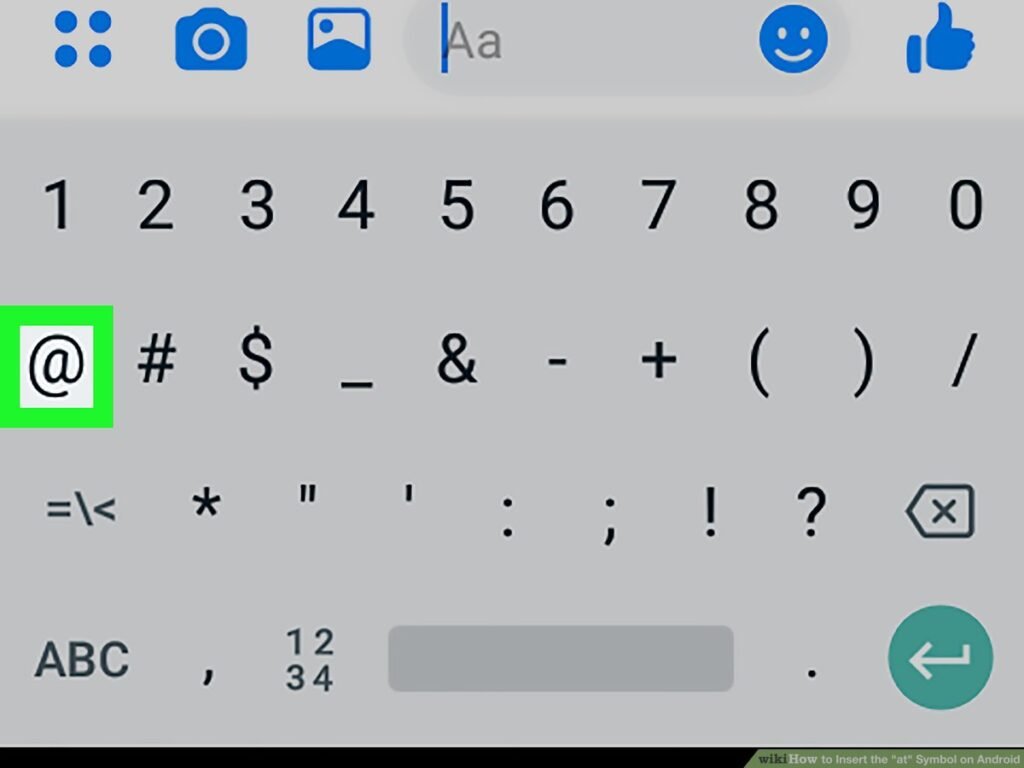The at symbol (@), also known as the address sign, has become a cornerstone of modern communication. Whether you’re writing an email or tagging someone on social media, you’ve probably used this small but powerful character countless times. But have you ever wondered where the at symbol comes from? In this article, we’ll dive into the history of the at symbol, its various uses, and its surprising journey from an obscure commercial character to an essential part of our digital world.
What is the At Symbol (@)?
The at symbol is commonly recognized as the email symbol. We see it every day in email addresses like example@domain.com, where it connects the user with their mail server. However, its function extends beyond email—it’s also crucial for identifying social media handles. Platforms like Twitter and Instagram use the at symbol to tag or reference users.
So, what exactly does the at symbol represent? Historically, it indicated a place or rate in commerce. Today, it serves as a global sign of connectivity in the digital world.
The Origins of the At Symbol
The history of the at symbol can be traced back several centuries, though its exact origins remain unclear. One popular theory is that it evolved from the Latin word “ad,” meaning “at” or “toward.” Medieval scribes merged the “a” and “d” into a single character to save time while writing. This merging likely gave birth to the at symbol we know today.
Another theory ties the at symbol’s history to Venetian merchants, who used it as a shorthand in trade. For example, they would write “10 items @ 2 ducats,” meaning ten items at the rate of two ducats each. This simple usage would eventually influence how the symbol is used in modern commerce and technology.
The At Symbol in Early Commerce
In the pre-digital era, the at symbol was mainly used by merchants to simplify business transactions. They employed it in letters, invoices, and sales receipts to denote prices or quantities. By the time typewriters became widely available in the 19th century, the at symbol had cemented its place in business communication. Typewriters featured it as a standard key, further solidifying its role in commerce.
The Modern Renaissance: Email and the At Symbol
The pivotal moment in the history of the at symbol came in 1971, when Ray Tomlinson, a computer scientist, needed a way to send messages between computers. He chose the at symbol because it was unique—unlikely to be part of any personal name—and already present on keyboards. This decision made the at symbol the default email symbol for connecting users with their mail servers.
Since then, the at symbol has become a fixture in the digital age, defining email communication and revolutionizing how we connect with others online.
How the At Symbol Became an Internet Icon
After its adoption for email, the at symbol quickly grew in prominence. The internet boomed in the 1990s, and email became an essential tool for communication. The at symbol was at the heart of this technological leap, becoming a global standard for connecting people via email addresses.
But the at symbol didn’t stop there. It found a new home in social media handles as well. Platforms like Twitter, Instagram, and Facebook adopted the symbol to denote usernames, making it an indispensable part of digital identity. Today, when you see @username, you immediately think of someone’s social media profile. The at symbol is now much more than a mere email symbol; it’s a key identifier in the digital age.
The At Symbol in Social Media
In the social media world, the at symbols is used for tagging and mentioning users. When you want to call someone’s attention to a post or message, you simply add their social media handle preceded by the at symbols. This usage has become so common that many people now associate the symbols more with social media than with email.
The at symbol’s history has evolved in a way that mirrors the rapid pace of technological change. From a practical tool for merchants to a defining feature of online communication, its journey is a testament to the adaptability of language and symbols.
The At Symbol Across Cultures and Languages
What makes the at symbols even more fascinating is its cultural diversity. In English, we call it the at sign or address sign, but other countries have their own unique names for it. For instance:
- Italians call it “chiocciola,” which means “snail” due to its spiral shape.
- In Hebrew, it’s known as “strudel,” after a type of pastry.
- The Swedes refer to it as “snabel-a,” or “elephant trunk-a.”
Each language and culture has brought its own interpretation to the at symbols, reflecting its global appeal and versatility.
The At Symbol in Programming
Beyond its role in email and social media, the at symbols plays an essential role in programming languages. In languages like Python and Perl, the at symbols is used to represent arrays or decorators. Its use in coding may not be as well-known as its role as an email symbosl, but it’s vital in computer science and programming.
Challenges and Misunderstandings of the At Symbol
Despite its widespread use today, the at symbols has faced some challenges along the way. For instance, older systems, especially outside the U.S., didn’t always support the character. International users often had trouble setting up email accounts due to the lack of at symbols support on their keyboards.
Additionally, for people unfamiliar with the digital world, the at symbols was confusing at first. Many mistakenly referred to it as the “email symbols” or misunderstood its significance.
The At Symbol in Art and Pop Culture
The unique shape of the at symbolss has also inspired artists and designers. It’s been featured in modern art, logo designs, and even fashion. Tech companies, in particular, have embraced its sleek, minimalist design to symbolize connectivity and innovation. The at symbols has become more than just a character on a keyboard—it’s a symbols of the interconnectedness that defines the digital age.
The Future of the At Symbol
What does the future hold for the at symbols? As digital communication continues to evolve, the at symbols is likely to remain a vital part of how we connect with one another. Whether in email, social media, or even new technologies that have yet to emerge, the at symbols will likely maintain its status as a symbols of digital communication and identity.
Its adaptability has allowed it to thrive for centuries, and it shows no signs of fading away. The at symbols will continue to be a key part of our language, transcending platforms and uniting users worldwide.
Read More: The Impact of Atmospheric Pollutants on Urban Air Quality: An In-Depth Analysis
Conclusion
The history of the at symbols is a story of transformation. From a practical tool in commerce to an icon of the digital age, the at symbols has proven its enduring relevance. Whether as an email symbols or a marker of social media handles, the at symbols connects us in ways we might take for granted. But as we continue to rely on it for communication, its place in our digital lives will only grow stronger.









